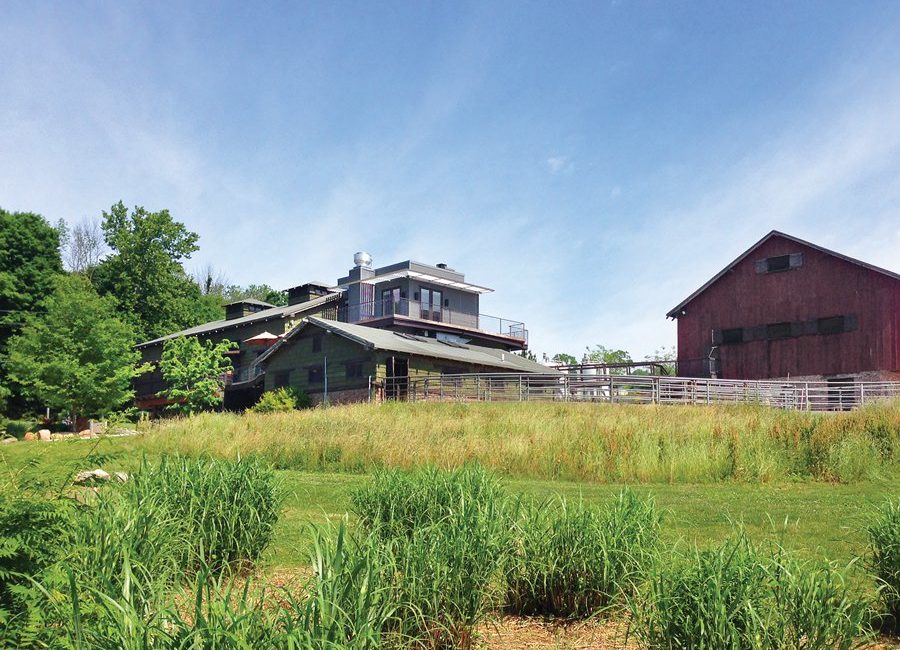
Eating Homegrown: Cheesemaking at Traders Point Creamery
When Jane Elder Kunz inherited a plot of Zionsville farmland from her grandmother in the late ’90s, the property consisted of little more than a small white house on 150 acres of pasture that her husband, cosmetic surgeon Fritz Kunz, jokingly refers to as the kind of place where Julie Andrews might twirl around in a circle before bursting into song. Now, the land holds Traders Point Creamery, Indiana’s first USDA-certified organic dairy farm, where visitors can tour the grounds, sit in on an afternoon milking, buy a glass jug of strawberry sipping yogurt at the Farm Store, and dine on whey-fed pork (from pigs raised in a little pen on the edge of the farm) in an onsite restaurant. And in the distance, the hills are alive with the sound of a small herd of cows grazing away. Here’s how the dairy takes its cheese from cow to curd.
STEP 1: THE GRASS IS ALWAYS GREENER
After the Kunzes decided their dairy would strictly adhere to the organic model, they had to wait three years to rid the soil of any residual pesticides and chemical treatment. The fields now contain a blend of grasses designed to give their cows a healthy diet, including waves of high-carb sorghum Sudan grass.
STEP 2: MOB RULE
Traders Point uses a “mob grazing” method, in which the farm’s 100-or-so Brown Swiss cows (chosen for their docile nature and high-fat milk rich in omega-3) are moved at least five times a day into adjoining slices of field—guided by temporary electrical lines. The cows line up to graze, following a lead cow. Once they finish one patch, they trample the remaining grass and manure to fertilize the ground, as they are trained to do.

STEP 3: WHITE GOLD
Milking happens twice a day, early in the morning and at 4 p.m., in a modernized parlor on the lower level of an 1870s barn relocated from Geneva, Indiana. The milk goes directly into a holding tank, which feeds into a pipeline system that leads to a bulk tank. “Once it’s in the system, it’s in the system. There are no buckets to pour,” says farm manager Mark Hostetler. The cows here produce up to 200 gallons of milk a day.

STEP 4: GOING ALL THE WHEY
In the cheese-making room, milk is separated into solid but loosely packed curds. The remaining liquid whey is drained off and fed to the farm’s pigs.

STEP 5: THE WHEEL THING
Curds are then poured into perforated forms that drain the rest of the liquid. The wheels of cheese sit in these containers until they’re firm enough to be removed.

STEP 6: MODERN MATURITY
The cheese cave’s temperature-moderating glass was imported from Holland, a legacy of the creamery’s first cheesemaker, Fons Smits. (The Dutchman has since opened his own company, Tulip Tree Creamery.) Aged varieties, like the classic farmstead Gouda Fleur de la Terre and the semisoft Brick Street Tomme, mature on wooden shelves for an average of six to 10 months and are washed, turned, and tended according to a daily schedule.

STEP 7: A CUT ABOVE
Chef Brandon Canfield of TPC’s The Loft restaurant transforms the farmstead cheeses into elaborate dishes like house-rolled egg pasta, or lets them speak for themselves on cheese-and-meat boards.






